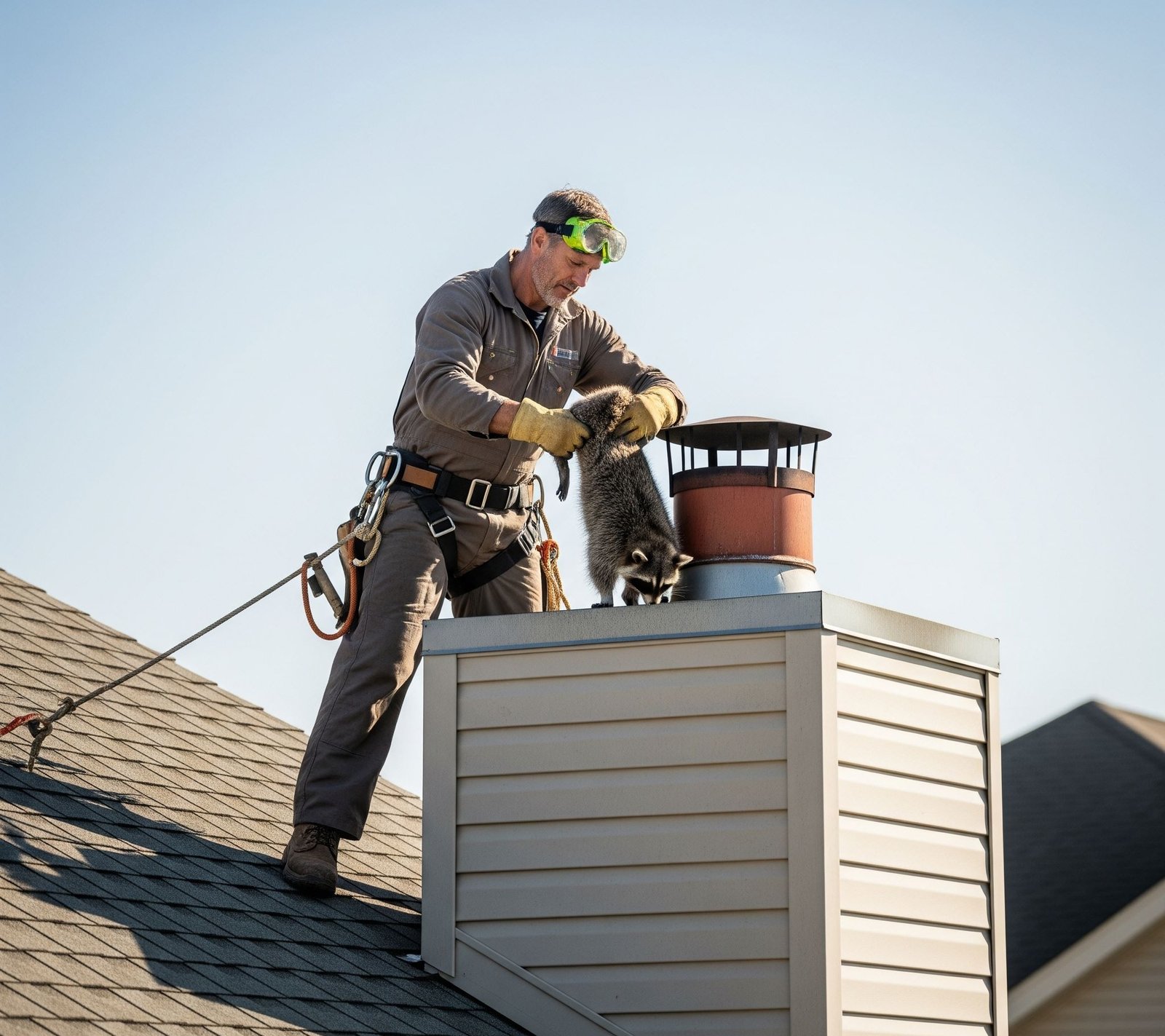f you’ve ever heard scratching or chirping coming from your fireplace, you know just how surprising it can be to find an unexpected visitor hiding out in your chimney. In Cedar Rapids, animals like raccoons, squirrels, birds, and bats sometimes see your chimney as a cozy place to call home. Getting them out safely and keeping them from coming back takes a bit of know-how and some careful steps. Let’s walk through the process together—from figuring out what’s living up there to making sure your chimney stays critter-free for good. Here’s what you need to know about chimney animal removal in a way that’s simple and easy to follow.
Step One: Playing Detective—Figuring Out What’s Up There
The very first thing you’ll want to do is determine who (or what) has moved into your chimney. Sometimes you’ll hear noises—scratching, flapping, or even a baby animal’s cries. Other times, you might notice strange smells or see bits of nesting material poking out from the flue or damper. If you peek up the fireplace with a flashlight (carefully!), you may spot fur, feathers, or even a pair of curious eyes staring back at you.
Different animals leave behind different clues. Raccoons are noisy and strong, often rearranging things to suit their needs. Squirrels tend to bring in lots of twigs and leaves. Birds might leave droppings or feathers, and bats are usually silent during the day but may be spotted clustered together. Knowing which critter you’re dealing with helps you plan the safest and most humane way to remove them.
Step Two: Planning for Safe and Kind Removal
Once you’ve figured out your chimney guest, it’s time to plan their exit. It’s important to be gentle—many of these animals are just looking for a place to raise babies or escape the weather. Here’s a look at the different ways pros and homeowners approach animal removal:
| Animal | Common Approach | Special Care |
|---|---|---|
| Raccoon | Use a one-way door or trap, then relocate | Check for babies before closing off the chimney |
| Squirrel | Encourage to leave, or use exclusion devices | Remove all nest material; act quickly to avoid fire risks |
| Bird | Gently remove or let them fly out | Some birds (like chimney swifts) are protected by law |
| Bat | Install a bat cone to allow exit but not re-entry | Only remove after maternity season to protect young |
Sometimes you can encourage an animal to leave by making things less comfortable—playing loud music or shining a light up the chimney. But for safety and legal reasons, especially with protected species, it’s usually best to call a local wildlife removal specialist.
Step Three: Cleaning Up and Checking for Damage
After the animal is out, you’re not quite finished. Animals often leave behind nests, droppings, and even bits of food. These can be more than just messy—they can block airflow or even start a fire if not removed. Carefully scoop out any debris (wear gloves and a mask), and if you’re not comfortable doing this yourself, a chimney sweep can help.
It’s also wise to check for any damage the animal may have caused. Look for chewed wires, broken bricks, or torn insulation. Fixing these issues now can prevent bigger problems down the road, like water leaks or dangerous gas buildup.
Step Four: Keeping Your Chimney Animal-Free for Good
Now that your uninvited guest has moved out, let’s make sure no one else moves in. The best way to do this is to install a chimney cap—a metal or mesh cover that still lets smoke out but keeps animals from getting in. Check that your chimney cap fits tightly and doesn’t have any holes or gaps. While you’re at it, look around your roof for any other possible entry points animals might use, and seal those up too.
Make a habit of inspecting your chimney at least once a year, especially before winter. This small bit of maintenance can save you a lot of trouble—and keep your home cozy, safe, and critter-free.
“The best way to deal with wildlife in your chimney is with patience, understanding, and a little prevention—because every animal is just looking for a warm place to call home.”
Conclusion: A Chimney That’s Safe for You—Not for Critters
Dealing with animals in your chimney can be a bit nerve-wracking, but with a careful approach and a little know-how, you can handle it safely and humanely. Remember to figure out what animal you’re dealing with, choose the right removal method, clean up thoroughly, and take steps to prevent future visits. If you’re ever unsure or uncomfortable, don’t hesitate to call a professional—they have the tools and experience to handle even the trickiest situations. Here’s to a cozy, peaceful home and a chimney that’s only used for what it was meant for! And if you ever need help with chimney animal removal in Cedar Rapids, now you know the steps to take.
Read more : Cedar Rapids Chimney Sweep

